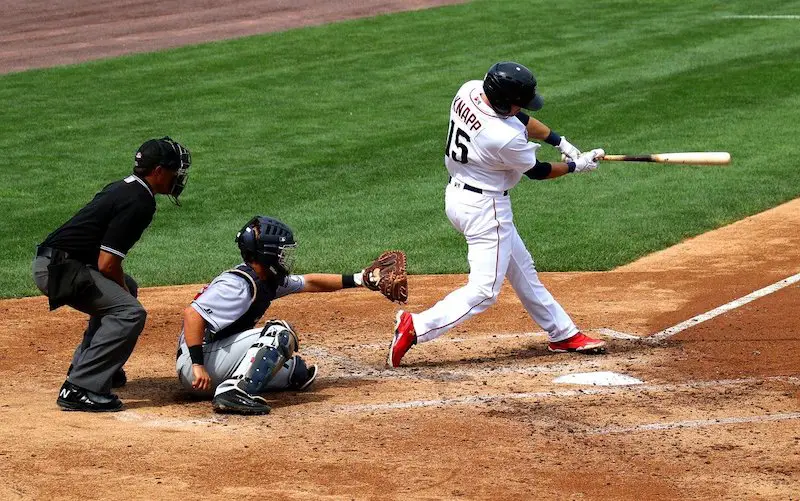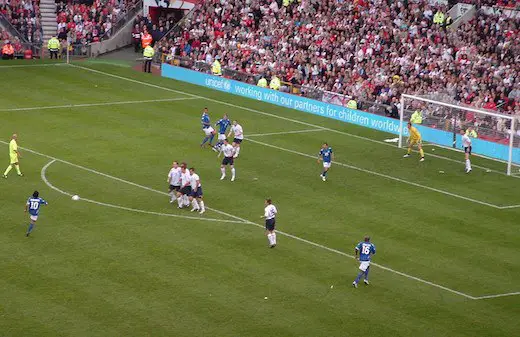- The First Set Of Soccer Rules For Soccer Were Written At Cambridge University In 1843.
- Standardised Rules For Soccer Were Eventually Agreed Upon By The Football Association In 1863.
- Since The Late 19th Century, Rules Have Changed And Adapted To Keep Up With Modern Developments, Such As Goal-line Technology And Video Assistant Referees (Var)
Your Guide
 Alex Waite
Alex Waite
Cambridge University was where the early, fundamental and influential rules of soccer were written in 1843.
Since then, the rules of soccer have EVOLVED and they have become refined to modern-day soccer in professional and amateur games.

Like the history of soccer rules, learning them requires adapting and changing.
Personally, when I first started playing the game in the 1990s, I didn’t know my offside from my foul throw or my free-kick from my red card.
There were so many things to wrap my head around, whilst also trying to learn the basics of ball control and technique.
The rules change regularly to make things more challenging, but this reflects how soccer has evolved over time to adapt to an ever-changing game.
The first rules written up by a group of enthusiastic soccer players at Cambridge University in 1843 may be a world apart from the modern-day ones.
But these fundamental laws got the ball rolling for future generations of organized and standardized soccer rules.
In this article, we look at the original laws created at Cambridge and we will analyze how the rules have changed over time.
Cambridge University Rules
Before a group of Cambridge University students met in 1843 to decide how to create soccer rules, the game was largely unorganized and informal.
Early forms of the game included large numbers on each team (sometimes reaching the hundreds), chasing a ball around huge spaces, like fields or even entire towns, and trying to score in loosely defined goals.
There was also no defined rule on handling the ball WHIST IN POSSESSION.
However, in the mid-1800s, public schools in the UK started to form their own rules.
Then, five years after the initial meeting in 1843, the group of Cambridge students published the first known set of standard soccer rules.
Once confirmed, the students pinned the 11 rules to trees around Parker’s Piece, a large common in Cambridge where soccer matches took place, and these became the first set of soccer rules ever.
The list included some of the rules still in use today, including:
- “At the commencement of the play, the ball shall be kicked off from the middle of the ground: after every goal, there shall be a kick-off in the same way.”
- “After a goal, the losing side shall kick-off; the sides changing goals unless a previous arrangement be made to the contrary.”
- “The ball is out when it has passed the line of the flag-posts on either side of the ground, in which case it shall be thrown in straight.”
- “The ball is behind when it has passed the goal on either side of it.”
- “Every match shall be decided by a majority of goals.”
Evolution of Soccer Rules
When I attend soccer matches, as a coach, player or fan, a big source of discussion about the rules and how they are implemented is common.
A lot of the time in post-match discussions, fans, players and other coaches criticise the referee about how they should have done this, seen that or not given a foul.
However, I always have sympathy for the referee, largely because I cannot keep up with the law changes myself.
Luckily, coaches and players do not need to keep up with every detail and change to the rules. But referees do need to enforce rule changes.
Considering how many times the rules of soccer have adapted and changed over the past 150 years, my personal take is that referees need a bit more slack.
As a general guide to showcase how much the rules change, we have listed some of the major dates and rule alterations to soccer below.
1863 Football Association
Between 1848 and 1863, when the Football Association (FA) expanded the rules of soccer, there were different regional styles of play.
Sheffield rules, for example, were largely used in the north, while Cambridge rules were implemented in the south, as many ex-Cambridge students went on to found soccer clubs.
However, following meetings between soccer clubs in London in 1863, the FA was formed, and the new, revised rules were IMPLEMENTED.
The major change from the new rules was taking out any rules that involved holding the ball or running with the ball whilst it was in a players’ hands.
By 1889, when the English Football League was established, the FA’s rules were the most commonly used soccer rules.
1886 IFAB
The International Football Association Board (IFAB) was founded by the English, Scottish, Irish and Welsh FA and it was announced as the worldwide governing body that vowed to develop and uphold the Laws of the Game.
1891 Referee Introduced
Although umpires were used previously in soccer matches, they were hardly comparable to the referees were are used to today.
Before 1891, two umpires, one for each team, would stand on the sidelines and they were only consulted if the two teams had a DISPUTE OVER THE RULES.
But, referees were given a more active role in 1891 as they were armed with a whistle and given the power to signal for fouls, and penalties and penalize players.
1904 FIFA Established
As soccer grew globally, Federation Internationale de Football Association (FIFA) was established to bring organization and professionalization to the sport.
Representatives from France, Belgium, Denmark, Netherlands, Spain, Sweden and Switzerland met in Paris on 21 May 1904 to sign the foundation act for FIFA.
Today, the organisation has 211 member countries from around the globe.
1938 Rous Laws
Minor tweaks were made regularly to the rules of soccer after the FA standardisation in 1863.
However, then international referee and secretary of the FA spent two years re-wording and re-organising the existing Laws of the Game, so they applied to a modern, global game.
In 1938, the Rous Laws were accepted by the IFAB and they became the new, standardised Laws of the Game.
1990 Modern Offside Law Introduced
This is a rule that has divided opinion between me, family members, friends and colleagues on many occasions.
Watching replays on Match of the Day on a Saturday evening to argue whether Thierry Henry had made a WELL-TIMED RUN
Or whether the Arsenal striker was being naive by timing his off the ball run incorrectly, was like presenting evidence in a court case in my household GROWING UP.
The modern offside rule was introduced in 1990 and the change meant an attacking player was onside if he was level with the last defender once the ball was played.
This law is still in use today and, for me, it remains one of the most controversial and debated in world soccer.
2013 Goal Line Technology Introduced in England
Another issue that has caused pain and mass discussion and debate, especially as all England fans will remember from the 2010 World Cup.
England trailed Germany 2-1 in the World Cup quarter-final before Frank Lampard thumped a volley that crashed off the underside of the crossbar and bounced over the GOAL LINE.
Watching the game with my friends in a crowded London pub, I remember the WHOLE PLACE ERUPTING IN CELEBRATION.
Even to this day, it was clear the ball bounced over the goal line, and the replays proved this by a good yard!
Yet, there was no goal-line technology to check and angry England fans would have to wait until 2013 (three years too late for the Three Lions faithful) until goal-line technology was introduced.
It was first used in the 2013/14 Premier League and English cup competitions and remains a key component of the rules today.
2017 Video Assistant Referee Debuts at Confederations Cup
One of modern soccer’s most significant developments was the Video Assistant Referee (VAR) introduction.
The technology was debated for years before it was finally used in the 2017 Confederations Cup.
Major League Soccer (MLS) then brought in VAR a few months later for the new season.
In the 2018 World Cup, VAR was used and implemented in the Premier League in the 2018/19 season.




I want to thank you for this excellent read!! I certainly loved every
little bit of it. I have you bookmarked to check out new stuff you post…